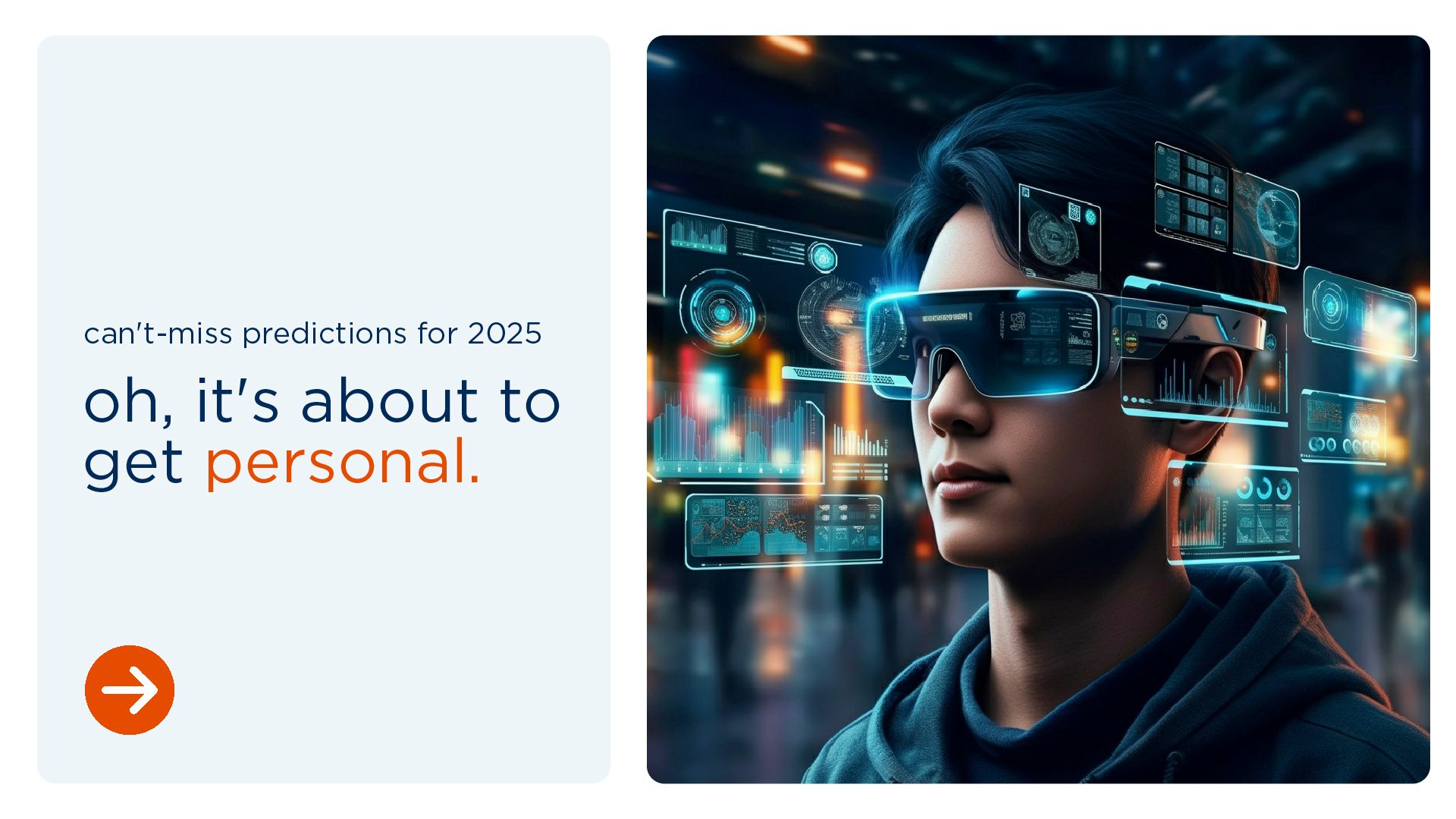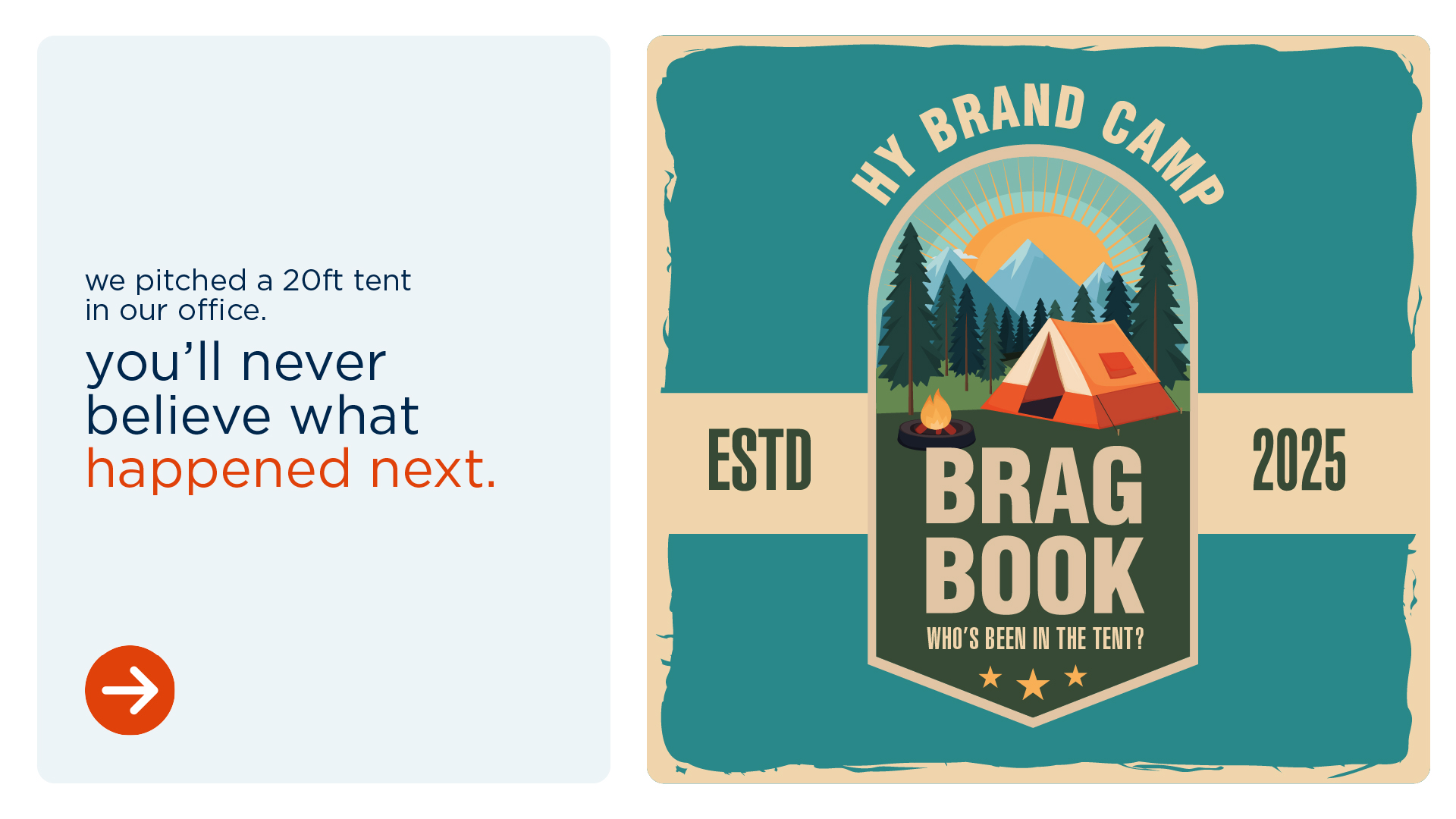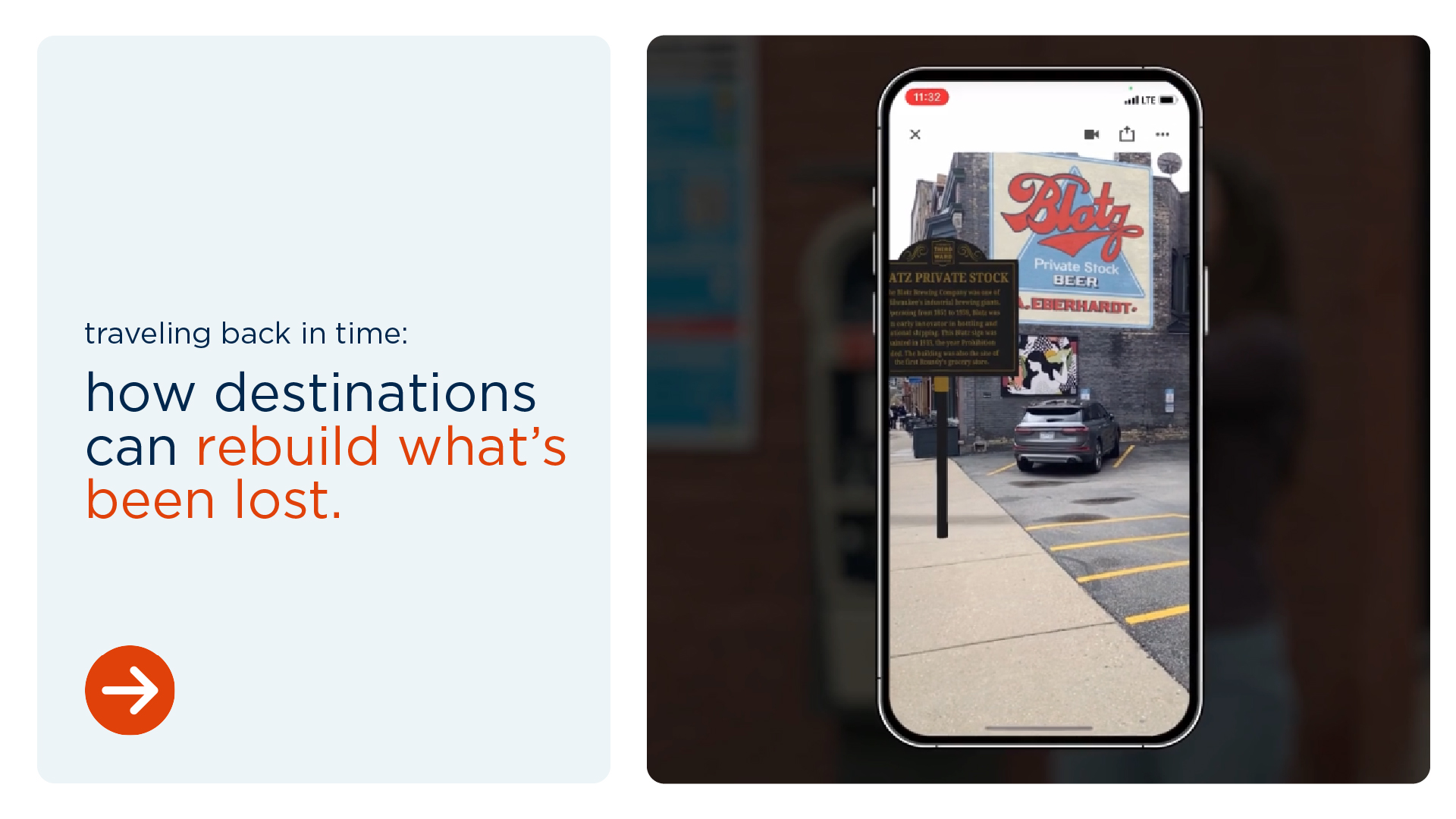9 Shocking Predictions That Will Shake Up the Marketing World in 2025
January 8, 2025
Will this be the year thoughts become first-party data (Looking at you, Amazon and Meta)? Will AI take over the world, like in the Terminator or Matrix? Or Wall-E? Will the Metaverse actually become a thing??
Okay, we’re not talking doomsday predictions, but brace yourself because we’re on the verge of some major shifts happening in marketing that will make for a fun ride for years to come. While not all these predictions will come true in 2025 (we’re marketers, not Nostradamus), you can be sure they’re coming. For fun, we organized these predictions on a scale of “Oh, it's happening” to “HA! Wouldn’t that be great!”
Happy reading and remember to always conceal your thoughts—Big AI is listening!
Oh, it’s happening:
1. AI will become part of most daily tasks
AI might be disappointing Wall Street (very few, if any, companies are citing AI as a significant driver of their earnings), but it will keep making in-roads with businesses and consumers. Many of the “breakthroughs” won’t be big announcements, major platform updates or new players. They will be small additions to environments that we already use such as expanded AI in online searches, features and connectivity in office platforms like Outlook, PowerPoint and Excel but also in Google’s suite of tools (Gmail, Sheets, Drive, etc.). AI is more likely to “emerge” into existing environments than to require adoption of new platforms.
Oh, and we’ll take “the over” on there being two Super Bowl ads that are entirely created by AI (and they will tout that fact).

2. Brands will get back to (good) branding
A reduction in inflation and an economic upswing combined with a surge in low-cost alternative products will spur reputable brands to get back to reminding consumers why they matter. And along with this branding will be a resurgence of creative that gets people’s attention. Not all of it, because let’s face it—bad marketing will always exist. In fact, ad satisfaction was way down in 2024, especially on social media (source). Editorial note: We really hope this one happens.
3. Knowing what you want before you do
Yep, get ready, because all that AI we keep talking about is analyzing everyone’s behaviors to predict what you like and don’t like—like never before. This “predictive personalization” means all this data will allow brands to provide a range of offerings to individuals they never considered based on things these people didn’t even know they wanted—all with extreme accuracy. And while all this might sound somewhat familiar, consider the immediacy of AI and how machine learning will continue to deliver smarter and smarter targeting, all in real, real time. So, that watch you never thought you’d buy because you haven’t worn one in over a decade, you can thank AI for that.

It could happen:
4. Ads all around you
Remember when the movie Minority Report (yep, another movie reference) introduced us to a future in which retina scans would reveal a world of hyper-targeted ads all around us? Well, we’re nearly there. Minus the retina scans. Statista projects the market for smart glasses to grow from 1.49 million in 2024 to 1.63 million units in 2025. Get ready for an explosion of ads that don’t require eyes on a device or an out-of-home board that someone may or may not see. We’re witnessing (with our own eyes) the evolution of advertising, all thanks to the influx of smart glasses. But rather than ads simply appearing based on your location or interests, how about your ability to interact with your environment to get what you want?
Imagine you’re walking through the airport, and you see a woman wearing a blouse you love. Tell your glasses to find that blouse and add it to your wish list. Or tell your glasses to find you the best deals on a car you just walked past.

5. Hologram marketing goes mainstream
Hologram technology is getting better and better. In the battle to deliver a richer and stickier brand experience, look for hologram ads to reach more of a mass market in 2025. What can you expect? You won’t have to visit the Sphere in Las Vegas to experience the awe-inspiring world of hologram displays. The technology is making it possible for brands to create these experiences at events, on billboards and in stores. As competition for eyeballs increases, expect hologram marketing to set apart brands with money to spend.

6. ARevolution
We’ve come a long way since the days of Pokémon Go, when augmented reality (AR) was a tool for simply having fun. And we’re also moving beyond the standard applications for AR today—trying on new glasses or the latest beard style or seeing how that new furniture or paint color would look in your home. Much like the QR code has become a way to drive further interaction, get ready for AR-friendly signs posted at retail shops that signal shoppers to pull out their phone to see how that outfit will look on you—in real-time. Or to camera over items at the grocery store for instant recipes. Why not DIY projects? We’re already seeing this tech used for things like new closet design. You could just as easily hold your phone up to that leaky faucet to get steps for fixing it.

And those watching TV will enjoy new integrations that allow you to scan over actors and sports players or use voice command to get stats that display next to them. And while you’re using AR to do these things, expect sponsor mentions and advertising to find its way in, whether it’s “powered by ESPN” or brought to you by “IMDB.”
Ha! Wouldn't that be great!:
7. Hyper-hyper personalization
Advances in Dynamic Creative Optimization (DCO) have made it possible for elements in ads, such as text, visuals and CTA, to change in real-time based on the individual’s demographics, interests and behaviors. But creating these unique ads requires a large volume of assets to pull from, assets that don’t account for all the nuances of every individual targeted. But what if that library of content was limitless and the video content served could combine any number of things to make it even more customized to that person?
Imagine you’re an auto brand with a new mini-van model perfect for a family of four. Third-party data can tell you the ages of the family, their income, home type, where they live and even the style of their hair and clothing. Expect evolutions in DCO to create video ads and content that completely tailor every element of the ad to each viewer. Let’s take it one step further. Why not a perfect replica of your family in the ad so you can truly envision this new vehicle in your driveway?

8. Add whatever you see to your cart
The lines between advertising and non-advertising continue to blur and content providers continue to make it easier for consumers to act when motivated. Whether you’re watching on a TV, smart phone, smart glasses or tablet, expect greater integrations and opportunities for buying as you watch—all without pulling out your phone. Imagine watching a show or movie or viewing a piece of content on social and simply asking your device to add that outfit, hat, watch or whatever that actor is wearing to your shopping or wish list—instantly. No QR code, no looking it up on your phone to see if it’s available, just saying the words. Expect the same for every ad you see.

9. Ideas to full-blown execution
Right now, AI is a great resource for creative professionals to write preliminary copy and scripts and generate visuals to support your ideas. But what if you could feed AI a prompt and it spits out hundreds of ads, videos, social posts and more that can be reviewed and finessed—akin to choosing selects from the raw files of a photo shoot? Or better yet, bring in your creative team to have a conversation with the AI to change this, move that, slow this down, add a log cabin over there? All the while watching the content change in real-time, constantly evolving until each piece is done to perfection.
That’s where things are headed and it won’t take long to get there. Bottom line—the “idea” still matters and that requires the right vision and details to arrive at your destination. But getting there will speed up, bringing with it limitless possibilities.

Summary
Whew… The future of marketing can make your head spin, whether it’s the things right around the corner or those still a few years away. The exciting news is that we as marketers are on the precipice of change like we’ve never seen it. Change that promises to deliver better, richer, more targeted and smarter solutions for helping people and getting the word out. So, while we continue to tinker with and understand the potential and pitfalls of AI, AR, VR and whatever other acronyms come and go, we might as well buckle up, because tomorrow promises to be an adventure.







